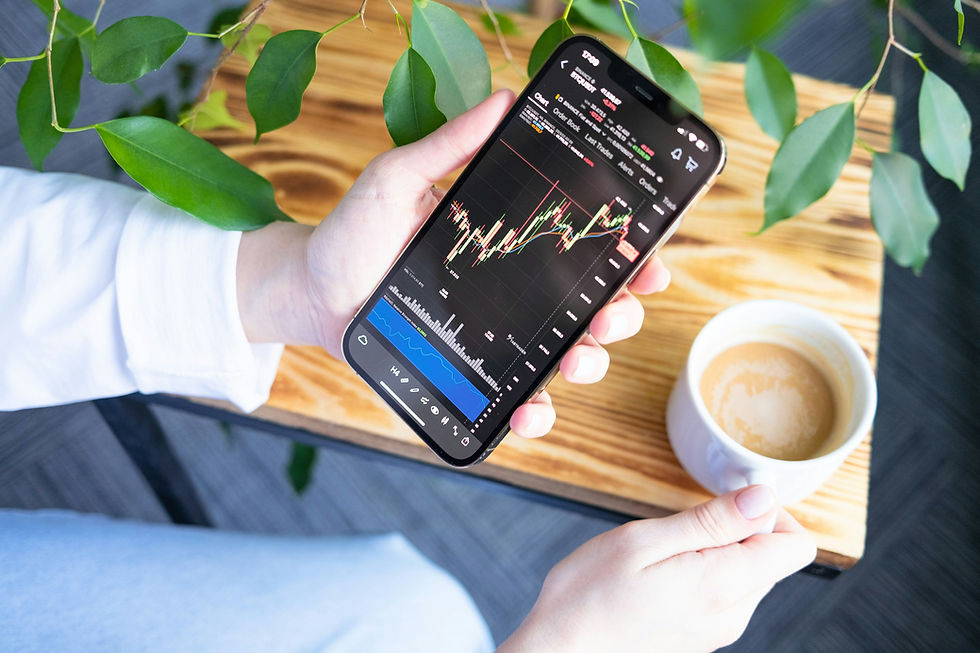How to Track Expenses in 3 Easy Steps
- Editor
- Jul 11
- 4 min read

Tracking expenses is a crucial aspect of personal finance management. Whether you are trying to save for a big purchase, pay off debt, or simply want to understand where your money goes each month, having a clear picture of your spending habits is essential. In this guide, we will explore how to track expenses 3 easy steps, providing you with practical tips and authoritative resources to help you along the way.
Step 1: Choose Your Tracking Method
The first step in tracking your expenses is to choose a method that works best for you. There are several options available, each with its advantages and disadvantages. Here are some popular methods:
1.1. Manual Tracking
One of the simplest ways to track expenses is to do it manually. This can be done using a notebook, a spreadsheet, or even a budgeting app. Here's how to get started:
Notebook: Keep a dedicated notebook where you write down every expense as it occurs. This method is straightforward but can be time-consuming.
Spreadsheet: Use software like Microsoft Excel or Google Sheets to create a custom expense tracker. You can set up categories, add formulas for totals, and even create charts to visualize your spending.
Budgeting Apps: There are numerous apps available that can help you track expenses automatically. Some popular options include Mint, YNAB (You Need A Budget), and PocketGuard. These apps can link to your bank accounts and credit cards, making it easier to track your spending in real-time.
1.2. Automated Tracking
If you prefer a more hands-off approach, consider using automated tracking tools. Many financial institutions offer built-in budgeting tools that categorize your spending for you. Additionally, third-party apps can sync with your bank accounts to provide a comprehensive view of your finances.
1.3. Hybrid Approach
You can also combine manual and automated methods. For example, you might use an app to track most of your expenses but keep a manual log for cash transactions. This hybrid approach can give you the best of both worlds.
Step 2: Categorize Your Expenses
Once you have chosen a tracking method, the next step is to categorize your expenses. This will help you understand where your money is going and identify areas where you can cut back. Here are some common expense categories:
2.1. Fixed Expenses
These are regular, recurring expenses that do not change much from month to month. Examples include:
Rent or mortgage payments
Insurance premiums
Subscription services (e.g., Netflix, Spotify)
2.2. Variable Expenses
Variable expenses can fluctuate from month to month. Examples include:
Groceries
Dining out
Entertainment
2.3. Discretionary Expenses
These are non-essential expenses that you can choose to reduce or eliminate. Examples include:
Hobbies
Luxury items
Travel
2.4. Savings and Investments
Don't forget to include your savings and investment contributions in your expense tracking. This can help you ensure that you are prioritizing your financial goals.
2.5. Create a Budget
Once you have categorized your expenses, create a budget based on your income and spending habits. A budget will help you allocate funds to each category and set limits on your spending. You can use the 50/30/20 rule as a guideline:
50% of your income for needs (fixed and variable expenses)
30% for wants (discretionary expenses)
20% for savings and debt repayment
Step 3: Review and Adjust Regularly
Tracking expenses is not a one-time task; it requires regular review and adjustment. Here's how to stay on top of your finances:
3.1. Weekly Check-Ins
Set aside time each week to review your expenses. This will help you stay accountable and make adjustments as needed. During your check-in, consider the following:
Are you staying within your budget?
Are there any unexpected expenses that need to be addressed?
Are there areas where you can cut back?
3.2. Monthly Reviews
At the end of each month, conduct a more in-depth review of your finances. Analyze your spending patterns and compare them to your budget. Look for trends, such as:
Categories where you consistently overspend
Areas where you can save more
Changes in income or expenses that may require a budget adjustment
3.3. Set Financial Goals
As you track your expenses, consider setting short-term and long-term financial goals. This could include saving for a vacation, paying off debt, or building an emergency fund. Having clear goals can motivate you to stick to your budget and make better financial decisions.
3.4. Use Financial Tools
Consider using financial tools and resources to help you stay organized and informed. Websites like NerdWallet and The Balance offer valuable insights into budgeting, saving, and investing. Additionally, financial podcasts and blogs can provide tips and inspiration for managing your money effectively.
Tracking expenses is a vital skill that can lead to better financial health and peace of mind. By following these three easy steps—choosing your tracking method, categorizing your expenses, and reviewing regularly—you can gain a clearer understanding of your spending habits and make informed financial decisions.
Remember, the key to successful expense tracking is consistency. Make it a habit to review your finances regularly, and don't be afraid to adjust your budget as your circumstances change. With dedication and the right tools, you can take control of your finances and work towards achieving your financial goals.












Hozzászólások